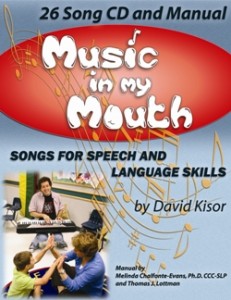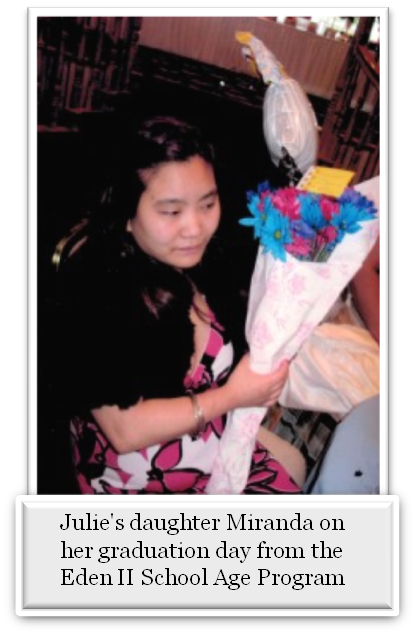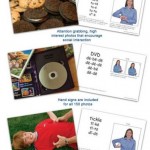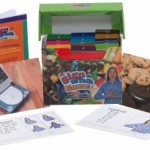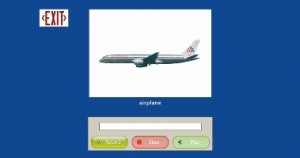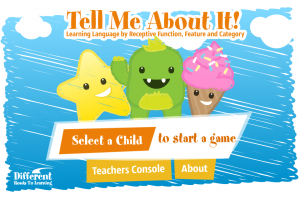 We’re thrilled to introduce you to our latest iPhone/iPad App for teaching language to students with Autism: Tell Me About It! Learning Language by Receptive Function, Feature & Category.
We’re thrilled to introduce you to our latest iPhone/iPad App for teaching language to students with Autism: Tell Me About It! Learning Language by Receptive Function, Feature & Category.
Tell Me About It! teaches the label, category, function, and features of more than 235 language targets over 6 levels of incremental difficulty with over 1000 unique testable attributes. The presentation of each language target conforms to an Applied Behavior Analysis (ABA) discrete trial program, with reinforcement provided by a token economy system. Once the user collects the given number of tokens, they are rewarded with an adorable 5-10 second animation clip of the token character. Tell Me About It! provides a self-contained discrete trial program that error corrects and provides direct reinforcement to the student while collecting and synthesizing data for up to 10 students. There is a Student Report Card in the format of a data sheet that displays data for each student, with an option to email the results.
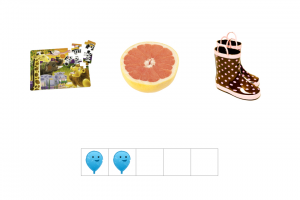
Categories
The App covers 15 categories of language targets that include: Animals, Body Parts, Clothing, Food, Household Items, Dishes, Utensils, Tools, Toys, School Supplies, Sports, Vehicles, Accessories, Furniture, and Musical Instruments.
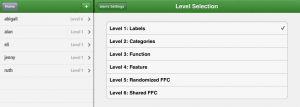 Levels
Levels
The App advances from the basic building blocks of language – simple labeling – all the way through shared features across categories. The Levels presented in incremental difficulty are: Labels; Categories; Function; Feature; Randomized Feature, Function, Category; and Shared Featured, Function, Category.

Teacher’s Console
Teachers and parents can delve into the Teacher’s Console to control the settings for each student by turning the written labels for each language target ON/OFF, selecting a specific token character, selecting the default Level, and choosing a Reinforcement Schedule.
There is even a motion that administrators can use while a game is in progress to access the Teacher’s Menu to adjust the settings or view reports. To access the Teacher’s Bar, simply swipe 2 fingers in an upward motion from the bottom of the screen up.
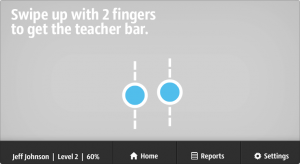
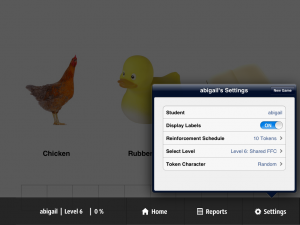
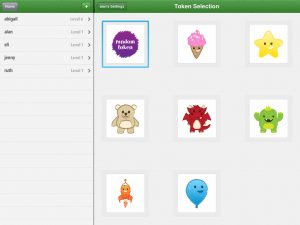 Reinforcement Schedule
Reinforcement Schedule
The Reinforcement Schedule determines how many targets the student must answer correctly in order to complete a trial session and receive a 5-10 second animation reward. There is an option for 3, 5, or 10 tokens and you can even select the token character you want or keep the default setting of Random.
Reward
Once the student obtains the set number of tokens, they are rewarded with an adorable and engaging animation clip, complete with stimulating images and sounds.
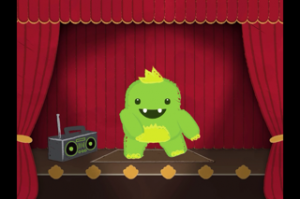
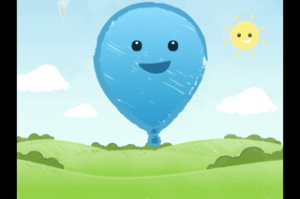
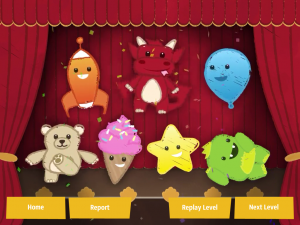
Reporting & Data
Tell Me About It! tracks each student’s progress and provides a report after every trial as well as a comprehensive Report Card accessible in the teacher’s console. You’ll see a + for every correct response and a – for incorrect ones. If a student hasn’t yet mastered a target, you’ll see the number of presentations in parentheses after the score. You can also email the Report Card to share data and progress.
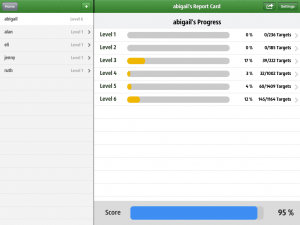
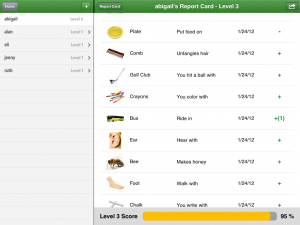
Determining Mastery of Targets
This App strives to mimic an actual one-on-one instructional session with a therapist as much as is possible in an application. For this App, we determine which targets will be defined as mastered by the program in a variety of ways depending on how many times they have been presented. When answered correctly on the very first presentation, the student receives both a token and verbal praise and that target is considered “known” or mastered and not presented again on that level. If the answer is not correct on that first presentation, the target will be reintroduced in subsequent trials and must then be answered correctly on two different, consecutive presentations to be considered mastered. When an incorrect response is given, error correction is provided by having the correct image flash while auditory correction is also provided. The App then shuffles the placement of the images, and re-presents the same question. If the student answers correctly on this second attempt, they receive verbal praise only (no token) and then move to another question. Note that your Data sheets will display, in parentheses, how many times each target has been presented so that you are always aware of your student’s progression and where there might be deficits.
To Purchase
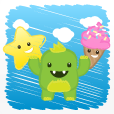
To purchase Tell Me About It! for $9.99, visit the App store in iTunes by clicking here!
Other Apps
We’re proud to offer two other quality Apps for developing language and cognitive skills.
 What Goes Together?
What Goes Together?
This app teaches young learners early association skills, relationships, reasoning by asking them to match what items go with others.

What’s That Sound? Learning to Listen and Identify Sounds
This app develops auditory processing and listening skills. Hear a sound and touch the image of what makes that sound.
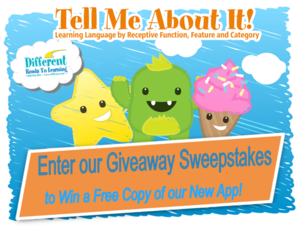 Different Roads to Learning is thrilled to offer you the chance to win a free copy of our latest iPhone/iPad App for teaching language to students with Autism or speech and language delays: Tell Me About It! Learning Language by Receptive Function, Feature & Category. This special offer ends on February 17, 2012 at 11:59 PM EST.
Different Roads to Learning is thrilled to offer you the chance to win a free copy of our latest iPhone/iPad App for teaching language to students with Autism or speech and language delays: Tell Me About It! Learning Language by Receptive Function, Feature & Category. This special offer ends on February 17, 2012 at 11:59 PM EST.
